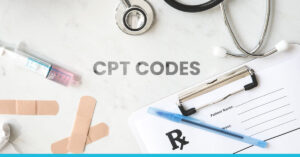Doctor patient communication will always be the core of why practices strive to do better, because if the patients are satisfied with the practice and the main patient communication, they will not change their practitioner and will stay for a longer period of time, increasing the retention rate.
Lately, a lot of attention has shifted to the Hospital Consumer Assessment of Healthcare Providers and Systems (HCAHPS) scores and endeavors to improve them. Shockingly, it is anything but difficult to get buried in the proportions of the present healthcare world and lose the focal point of the genuine “why” behind the reasons to improve the overall patient experience. What drives doctors and practitioners is providing excellent treatment services and improving clinical results for the patients. Powerful doctor patient communication is basically critical to these endeavors. The research relevant to doctor patient communication has consistently shown that there is an unmistakable connection between how the patient communication process takes place and patient results. Research has also shown the association between better communication scores and improved patient retention, lower readmission rates, improved death rates, lower malpractice risk, and decreased costs incurred per case. No other zone of clinical information or specialized aptitude greatly affects your patients other than doctor patient communication.
Notwithstanding the critical patient advantages, different focal points to improved patient communication incorporate improved doctor work satisfaction, improved part of the overall industry reputation and market share, and decreased clinical mistakes and patient safety occasions. The best part is, better doctor patient communication does not need an increased part of the doctor’s time nor extra expenses need to be incurred. Yet, as doctors are pushed to be more profitable and take on greater responsibilities, it is human instinct to become involved with focusing on tasks, schedules, and other prerequisites. At the point when that occurs, patient communication can take a downturn, and we can seem to be less mindful of the patient experience any practice is offering. Doctors need practice – and discipline – to take care of the business and satisfy the patients while they are at it. Fortunately, similar to any operation, great doctor patient communication is something that can be learned, evaluated, and improved with some experience. Here are a few systems to assist practitioners in organizing themselves and improving their patient communication.
Practices Should Create an Inviting Waiting Room
Creating an inviting room and an already set strategy to welcome the patients will be the best way to develop an amazing doctor patient communication. The patients will make their initial assumptions about the quality of practice and services provided when they enter and see the waiting room, so having an inviting waiting room is vital. Also, train the staff to develop a welcoming attitude that every patient can experience-it can be a smile and eye contact, or a greeting at the entrance. Continue by tending to the patient by name, presenting yourself and offering a handshake or other suitable greeting. Recognize all guests, offer them to sit down if appropriate, and start the discussion with something nonmedical to set up a comforting atmosphere. A patient is already hesitant to book an appointment and come to a clinic, the best a front office medical staff can do is make them feel more comfortable and accommodate them in any way they can, this way a practice can start the process of doctor patient communication effectively. Once your rapport has been developed with the patient along with proper patient communication, ask about the patient’s assumptions or objectives, and guarantee there is an open door for the entirety of his/her interests to be shared. You can pose inquiries to know more about what the patient wants, what the problems are, and what are their expectations, for example, “What were you hoping we would achieve today?” and “Is there something different you would prefer to discuss?” Once you have the patient’s plan, sum up it by posting the issues. A 2011 study showed that teaming up on a direct front plan did not increase visit length or the number of issues tended to per visit, however it diminished the probability of patients raising new issues or data late in the visit improving doctor patient communication.
Be Available For The Patients
Because the front office medical staff has more information and exposure in the field of healthcare it is no surprise that patients now and again see them as talking at them rather than with them, the words which may be used daily by the medical staff can be completely foreign for the patients creating a gap in patient communication. When we practice being available, we urge our patients to truly draw in with us at that time and be more open about their issues. Being open and comfortable would also help develop strong doctor patient communication, improving results as the doctor will be able to determine the root cause of a patient’s issue. The general nature of the doctor patient communication is better, and we regularly hear things in an improved way in comparison to when we are performing various tasks. To practice being available, turn your body so you are completely facing the patient, open your palms, and move forward, assuring the patient that the practice is capable of handling their problems.
Pick Positive Words to Help The Patients
To impart a positive goal, utilize the words “for you” and “with you” as regularly as could be expected under the circumstances to focus on the development of healthy doctor patient communication. Additionally, try to show appreciation. Say thank you, give a pat on the back or express your gratitude to your patients while they are experiencing a possibly troublesome and testing experience. For instance, “Thank you for coming in today.” Patients frequently do not anticipate appreciation, and that makes patient communication ever more special.
Nonverbal Doctor Patient Communication
Feelings are meant to be passed on and seen through nonverbal communication and body languages, such as outward appearances, hand movements, or foot tapping. If we focus on nonverbal communication, we then increase our familiarity with what messages we ship off others and what messages others send to us. This plays an important role in doctor patient communication
Focus on Asking Open-Ended Questions
Open-ended questions encourage patients to share their own story. That may incorporate, “Mention what occurred,” “Go on,” or “Help me understand please.” At the start of the visit, we cast a wide net of open-ended inquiries to construct compatibility, and accumulate data. As we comprehend the issue or concern, we can move to close-ended inquiries to fill in the holes in our arrangement and develop a differential finding in terms of doctor patient communication.
Show compassion to the patients
In order to engage with a patient, it is important to make connections. Sympathy requires listening eagerly and focusing on the patient to understand their experience and what they went through, especially when feelings are communicated. Compassion gives the patient approval of their experience and conveys, “I see you; I hear you; I get you and I acknowledge you.” This is the key to improve doctor patient communication. It also saves time. It’s assessed that patients give various insights about their interests during discussions with doctors. As indicated by a study distributed in JAMA, essential consideration meetings with missed pieces of information endured 20.1 minutes contrasted with 17.6 minutes without missed hints, and in medical procedure visits those with missed signs were 14 minutes versus 12.5 minutes long.
Final Adjustments Are Also Important to Improve Patient Communication
As the practice edges closer to the end of a visit, use the procedure of ask-advise request to tweak your message. Start by requesting the patient to portray their comprehension of the issue. Also make sure to convey your message clearly to ensure the message has been received accurately by the patient. To avoid further confusions, a practice can also collect surveys from their patients about the experience they have had. Suggestions are always helpful to improve the practice, also increasing productivity. At that point mention to the patient in clear language what you need to impart: the terrible news, treatment alternatives or other data. A helpful rule isn’t to give multiple snippets of data at a time and avoid clinical language. At last, inquire as to whether she gets it. You may likewise consider requesting that the patient goes through the processes again in their own words, which will allow them to ask any extra inquiries and shows whether you need to elaborate on anything.
Guarantee Buy-In Through Shared Dynamic Models
Buy-in is a basic component of a shared dynamic. It is an invitation to the patient to work together in dynamic around the objectives, alternatives and plans for treatment along with analysis. Patients who are counseled and occupied with their service report for improved satisfaction, comprehension, and to make them trust in their doctors’ choices. How you end a visit is as significant as your initial introduction. During the visit, it is useful to persistently situate the patient to the cycle of care. Sum up conclusion, treatment, and visualization, and afterward survey following stages: future visits, calls, communication of test outcomes and handoffs. End the encounter with an outflow of confidence or expectation to carry the visit to a good end.
Thinking about the entirety of the above strategies can appear to be overpowering. Keep joining different strategies in your efforts towards better patient communication. Your patients will thank you, and you will get additional importance from your work.



No comment yet, add your voice below!